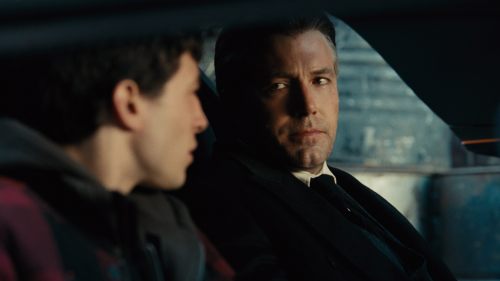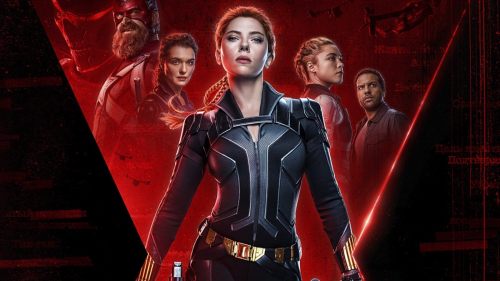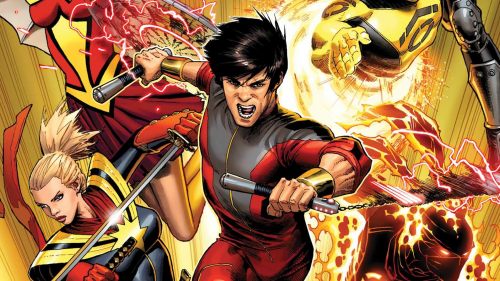100 Years Of Jack Kirby
[Image used with permission from Wikimedia Commons]
“Hebrew school was a rough place. An airplane flew over one day and I ran over to the window and everyone was pushing and shoving each other, and some guy really shoved me out of the way — I knocked him clean out.
I was about 12... They had to pick him up. But, I was so eager. That was such an innovation to hear the sound of the motor of an airplane flying overhead. I just had to get there in front. I was attracted by everything that seemed to be new and advanced.”
The above quote from a 1990 interview sums up everything you need to know about Jack Kirby. He was no pushover, but his curiosity for life and living marvels is what drove his every action. Even if you don’t know his name, chances are you’re intimately familiar with the creations: The Fantastic Four? That was him. The X-Men? Him too. Thor? Hulk? Iron Man? Captain America? Yup, you guessed it. He lived from August 28th 1917 to February 6th 1994, and his influence can still be felt across the spectrum of popular culture. He also lived a life worth admiring.
Born to Manhattan’s Lower East Side a hundred years ago today, Jacob Kurtzberg was the son of Jewish Austrian immigrants Rose and Benjamin. They moved across an ocean in search of a better life, as Benjamin toiled away at a garment factory so his son could learn to draw – but no institute seemed right for young Jacob. "I wasn't the kind of student that Pratt was looking for,” he told The Comics Journal, of his week-long stint at Clinton Hill at the age of fourteen. “They wanted people who would work on something forever. I didn't want to work on any project forever. I intended to get things done."
And so he did, teaching himself to sketch after being rejected from The Educational Alliance because he “drew too fast with charcoal,” learning from comic strips like Dickie Dare and Tarzan, and the political cartoons of Bill Sykes, Ding Darling and Rollin Kirby. One wonders if the latter had anything to do with the name he chose after going by Jack Curtis and Jack Cortez (though he claims he chose it because it sounded like “James Cagney”) amidst his search for an identity he felt would make him sound “more American,” even at the cost of being disowned by his family.
Kirby was no stranger to anti-Semitism, growing up in a rough neighborhood where multitudes of cultures all scrambled to stay afloat, though he maintained his name change was never intended to hide his Jewish roots. As World War II rolled around, the now Brooklyn-based Kirby worked alongside Joe Simon to create a new superhero for Timely Comics. Once the idea was given the go-ahead based on preliminary sketches, Simon and the publishers wished to bring on Connecticut artists Al Avison and Al Gabriele to move things along, but Kirby refused. He wanted to pencil the issue solo and make the deadline all on his own. “I hadn't expected this kind of reaction,” Simon recalled, “but I acceded to Kirby's wishes and, it turned out, was lucky that I did. There might have been two Als, but there was only one Jack Kirby.”
And so, in December of 1940, Captain America was born.

Kirby would himself go on to fight in World War II, being deployed in 1943 and leaving a year’s worth of material in the hands of capable creators to be finished and published in his absence. He landed on Omaha Beach in Normandy shortly after D-Day, and upon learning of Kirby’s penciling prowess, his Lieutenant gave him the deadly task of reconnaissance scouting, heading into towns in advance of the rest of the battalion in order to map and sketch out the war zones.
During the second year of his tour in Europe, Kirby suffered severe frostbite to the point that doctors in London considered amputating his legs, but upon fighting his way back to recovery, he re-joined the U.S. Army in January of 1945 before seeing the war through to its end. He was honorably discharged in June of that year after receiving a Bronze Star Medal.
Kirby re-joined Simon after the war and co-authored several genre comics at Harvey Comics in the 1950s, including the adult-oriented Young Romance which sold over a million copies regularly. He would return to the world of superheroes in 1954, albeit under unpleasant circumstances: upset with Timley’s successor Atlas Comics and their re-launch of “Commie Smasher” Captain America, Kirby and Simon created Fighting American, a parody of the concept in the wake of the McCarthy hearings.
After the short-lived Mainline Publications, the company he briefly co-owned with Simon between ’54 and ‘55, Kirby did a few short stints at both Marvel predecessor Timely and at DC predecessor National Comics, and he even began inking Green Arrow stories himself, a rarity at the time. Eventually, Kirby re-teamed with once Captain America contributor Stanley Lieber, co-creating Marvel’s First Family – and so the team of Stan Lee and Jack Kirby began their comicbook renaissance with The Fantastic Four #1 in November of 1961; the birth of the Marvel universe as we know it today.
In addition to creating the X-Men and The Avengers, Kirby even got to re-introduce Captain America as he saw fit, before going on to create The Inhumans, Black Panther, Doctor Doom, Galactus, Silver Surfer, and the worlds associated with them. But Kirby’s imagination wasn’t done yet, and upon moving to DC in the early ‘70s, he began work on his magnup opus the Fourth World saga, a sprawling, interconnected meta-series of cosmic stories told across various titles. From Orion, Mister Miracle and the New Gods of New Genesis, to Darkseid and the world of Apokolips, to The Forever People, and even to Superman’s Pal Jimmy Olsen, Kirby’s remixing of mythology and cosmic science fiction was all over DC’s pages, bursting with colour and unique designs and a never-before-seen pop comic bravura:

“Kirby is here!”
Kirby wasn’t there for long, unfortunately, but he left his mark before parting ways with DC in 1975. He returned to Marvel later that year and resumes work on Captain America, but his Fourth World had left him with an itch to scratch. Soon, even the pages of Marvel were littered with designs that felt at once tribal and futuristic as The Eternals and The Celestials were born; cosmic precursors to both the Marvel Universe and to life itself.

He even worked on the comicbook adaptation of 2001: A Space Odyssey, however much like the institutions of his youth, he found himself unhappy at Marvel as well – and so he moved to animation. Turbo Teen, Thundarr the Barbarian and several other children’s cartoons bore’s Kirby unique stamp, including his eventual re-teaming with Stan Lee on the Fantastic Four animated series.
By the 1980s, Kirby was already responsible for a vast percentage of Marvel and DC’s most out-there concepts, and he even had one final run with the latter between ’84 and ’85 for one last return to the Fourth World. It was after all this that he began to launch yet another universe of stories under Topps Comics, the self-owned “Kirbyverse,” comprising six simultaneous titles worth concepts and character he’d kept away in his files.

Jack passed away in early 1994, though not before completing the initial issues of Phantom Force, a Bruce Lee-inspired story he shelved away in 1978. After switching publishers constantly throughout his career, his final work was, fittingly, for the then newly formed Image Comics, an outsider company that eventually become Marvel and DC’s only major competitor. King Kirby pretty much did it all.
His name finally started showing up in the credits of Marvel movies in 2015 after decades of rights disputes, but regardless of whose name ends up where, Jack Kirby’s unparalleled imagination and unique style have left an indelible mark on visual storytelling and modern mythology. He was as creative as a creator could be, and going back as far as the beginnings of the second World War, he wasn’t afraid to take a stand for something, particularly against striking down fascism. That first issue of Captain America would go on to sell a million copies, something no American comic has done this century, but even in the early 1940s the story resulted in threatening letters to him and Simon, and personal intimidation outside their office.
Kirby’s response? He kept on creating.



